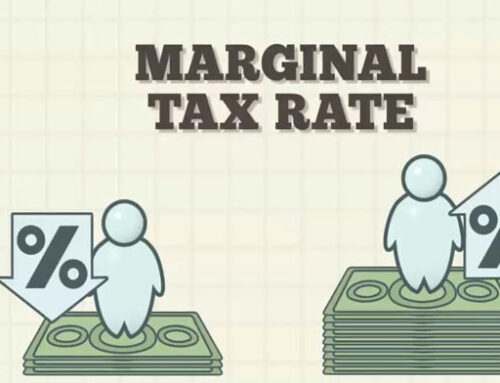In the past advertising for small business owners mostly involved creating an ad for print, television or radio (a catchy jingle is always a good way to go), cold calling (rarely a pleasant experience), sending out flyers or being at a conference. The problem with these types of advertising is that it is difficult to gage the direct impact of their effectiveness. Additionally, they are often fairly costly, which for small business owners can be difficult to afford.
Over the past few years the avenues for advertising have grown exponentially. Many types of advertising don’t even cost anything, except time. You can buy ads on numerous social media outlets that appeal to your target market or if you want to go the free route, you can set up a social account, post regularly and build an audience. Alternatively, you can set up a website which you can then optimize so that google and other search engines display it when someone is looking for your product or service. Email newsletters are also another effective and direct way of reaching potential buyers. One of the great benefits of this type of advertising is that you better monitor the effectiveness of your chosen strategy.
Most types of advertising are deductible, with some specific exclusions that are mentioned below.
Also Read: 7 Lesser Know Facts About RRSPs
ADVERTISING
While advertising is often used synonymously with marketing , in an accounting context it often refers specifically to actual ads such as:
- Print publications, newspapers, etc.
- Television commercials
- Google, Facebook, Amazon ads, Pinterest, Instagram, Tik Tok, Etsy or any other ads placed on social media.
WEBSITE COSTS:
Any costs incurred to set up and maintain your website usually fall under marketing/advertising costs as a website is a promotional tool. Some of these costs include:
- Website hosting and development costs
- Search engine optimization services
- Cost of purchasing domains relating to your business
- Fees for website builders such as Squarespace or Wix
- Email marketing services such as MailChimp or MailerLite for which you pay monthly/annual fees
PROMOTIONAL MATERIALS
There are a variety of costs that can be incurred to promote your business including:
- Business cards
- Pens, mugs, t shirts, and other branded items
- Brochures, pamphlets, newsletters that you might hand deliver or mail to prospective customers
- Samples of your product
CONFERENCES
Although conferences can be a bit pricey, it can be great way to get exposure for your product and establish credibility. Note that there are specific rules associated with the deductibility of conference expenses. Costs associated with conferences can be:
- Renting a booth/table at a conference or show
- Costs of travel including airfare and hotels to attend the conference for the owner and employees.
Also Read: Guidance On Deducting Home Office Expenses
CREATIVE SERVICES
Creative marketing services might include:
- Logo design that is outsourced to a third party
- Graphic design and layout of promotional and marketing materials, including on gig platforms like Fiverr and Upwork
- Subscriptions to design software such as Canva or Adobe Photoshop

OTHER MARKETING COSTS
- Signage for your store or business
- Social media costs such as outsourcing to a social media manager or subscriptions to social media services (although a basic subscription is usually free, you can upgrade to business services)
- Commissions to affiliates which can be the result of an in house program that you develop to incentivize other individuals or businesses to promote and sell your product or service.
- Brand development expenses including payments to brand managers or sponsorships of events that promote your brand
- Salaries to employees in your marketing department
- Commissions and salaries to salespeople who sell your product
- Meals and entertainment expenses. Note these are subject to specific exclusions. Generally, 50% of meals and entertainment expenses are deductible and must be incurred to discuss business with a customer or associate
- Gifts for clients are deductible based on certain criteria which is discussed in detail in article of the deductibility of gifts to clients
CHART OF ACCOUNTS FOR MARKETING COSTS
Your chart of accounts should reflect a meaningful breakdown of your marketing and advertising costs. The detail in your chart of accounts depends on what line items are important to monitor and analyze. You can use whatever nomenclature gives you the most clarity when reviewing your profit and loss and other expense reports. You can also have sub accounts for additional detail. And while detail can be very helpful in analyzing your expenses, you do want to make sure that you don’t have too many accounts as it can become overwhelming.
Other ways to classify accounts can be to use tags or class and location tracking in QuickBooks Online or Tracking categories in Xero. This is especially useful if you use a different marketing strategy for diverse products and services or geographic locations. By adding a tag or class, you can track expenses by the classification you have specified and monitor the effectiveness of your strategy.
A typical chart of accounts for marketing/advertising expenses might include the following :
- Advertising
- Meals and entertainment
- Travel
- Salaries
- Conferences
- Promotional materials
Each of these accounts can have sub accounts for categories in which spending might be more significant.
Also Read: 8 Qualities Of Highly Desirable Clients
SPECIFIC DEDUCTIBILITY CRITERIA FOR CRA
The restrictions below pertain specifically to print eg. Magazines and newspapers or Broadcast e.g. Television advertising
- Certain restrictions apply to the amount of the expense you can deduct for advertising in a periodical. You can deduct all the expense if your advertising is directed at a Canadian market and the original editorial content in the issue is 80% or more of the issue’s total non-advertising content.
- You can deduct 50% of the expense if your advertising in a periodical is directed at a Canadian market and the original editorial content in the issue is less than 80% of the issue’s total non-advertising content.
- You cannot deduct expenses for advertising directed mainly at a Canadian market when you advertise with a foreign broadcaster.ditorial content in the issue is less than 80% of the issue’s total non-advertising content.
- You cannot deduct expenses for advertising directed mainly at a Canadian market when you advertise with a foreign broadcaster.



